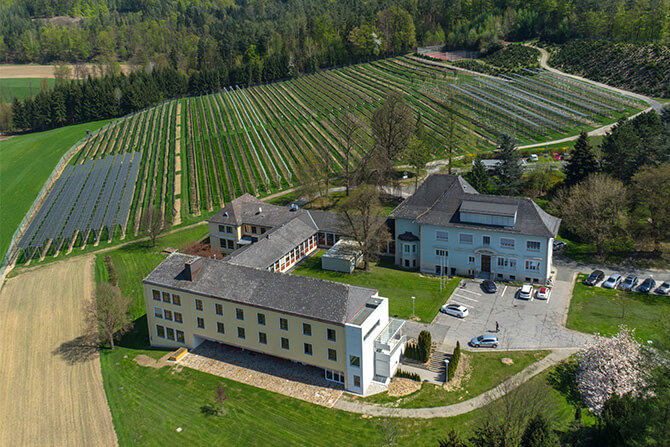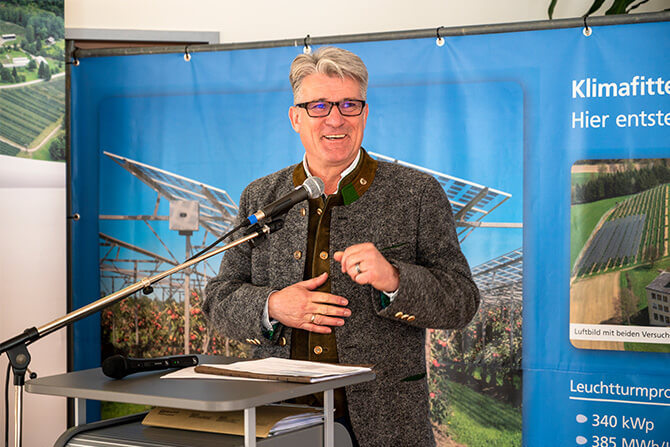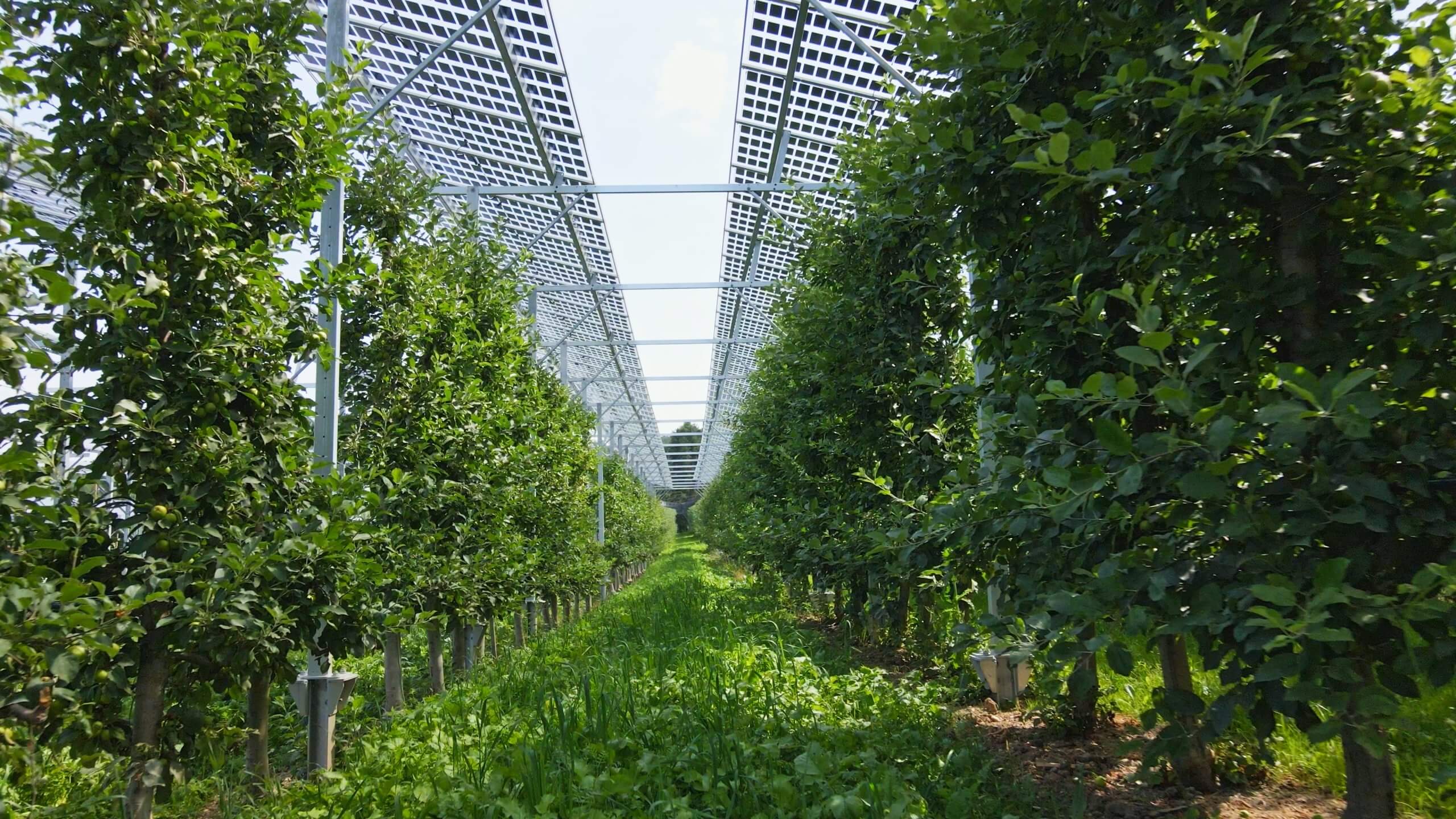Agri-PV system
in Haidegg

| The facts at a glance | |
|---|---|
| Total area of the two test plots | 5,000 m² |
| Roofed area covered by PV panels | 2,775 m² |
| Total installed capacity (in kilowatt peak) | 340 kWp |
| Projected annaul production (in kilowatt hours) | approx. 385,000 kWh |
| Number of PV modules | 1,134 units |
| Specification of the PV modules | 49 % transparency |
As part of the Austrian Climate and Energy Strategy, the federal government has set itself the goal of generating enough electricity from renewable energy sources to cover 100% of national consumption by 2030. Photovoltaic (PV) systems will be used to generate a significant part of this. This goal, i.e. to increase the share of PV electricity, is in conflict with food production, as both compete for the use of agricultural land. Agriphotovoltaic systems (or Agri-PV systems) are designed to tackle these competing needs through a targeted dual-use approach. Special crops (especially fruit farming) represent a possible opportunity for dual land use by utilizing specially installed Agri-PV systems. A series of practical trials are being conducted with the Agri-PV system at the Haidegg site to obtain more detailed findings on the efficiency of such systems in fruit farming – especially with regard to their dual benefits.
The goal of the project is to optimise the dual use of a site with fruit crops: for agricultural production on the one hand and to generate electricity on the other. The research and development of these special PV installations is being spearheaded by the cooperation between ECOwind and Haidegg Experimental Station for Fruit Growing and Viticulture.
Infovideo

If you want to watch this (YOUTUBE, VIMEO) Video, an element of personal data (your IP address) is sent to the operator of the video portal. It is possible, that the video provider stores you access in order to analyze your usage of this web page.
If you click the play button again, a cookie will be placed on your computer so that the web page knows that you have consented to view this embedded video in your browser. This cookie does not store any personal data, it only recognizes that a consent has been given for displaying the embedded video on your browser.
More details can be found in our data privacy statement
The most significant benefits of Agri-PV at a glance
- Sun protection and cooling power due to partial shading
- Hail protection provided by robust PV modules
- Lower surface evaporation on the soil or crop surfaces
- Better air circulation thanks to open construction
- Healthier food from reduced use of pesticides
- Less waste due to the elimination of non-durable materials
- Long service life (at least 30 years) due to robust and high-quality construction
I am confident that agriculture can substantially contribute to the energy transition by using agricultural land to produce renewable energy as well as food.
Johann Janker, Managing Director ECOwind

Agriphotovoltaics is the icing on the cake in terms of sustainable fruit farming systems, and individual fruit growers could become serious stakeholders in future energy provision.
Leonhard Steinbauer, Head of Unit Haidegg Experimental Station for Fruit Growing and Viticulture

Agri-PV enables us to take a significant step towards achieving our climate goals without taking over additional valuable agricultural land, thereby contributing to higher public acceptance.
Ernst Schweighofer, Project Developer ECOwind
Timeline
June 2022
Start-up
End of April - mid-May 2022
Planting crops
Mid-March - End of April 2022
Assembly of substructure | modules | inverters
17 March 2022
Start of construction
2 March 2022
Ground-breaking ceremony
Spring/summer 2021
Detailed planning
February 2021






